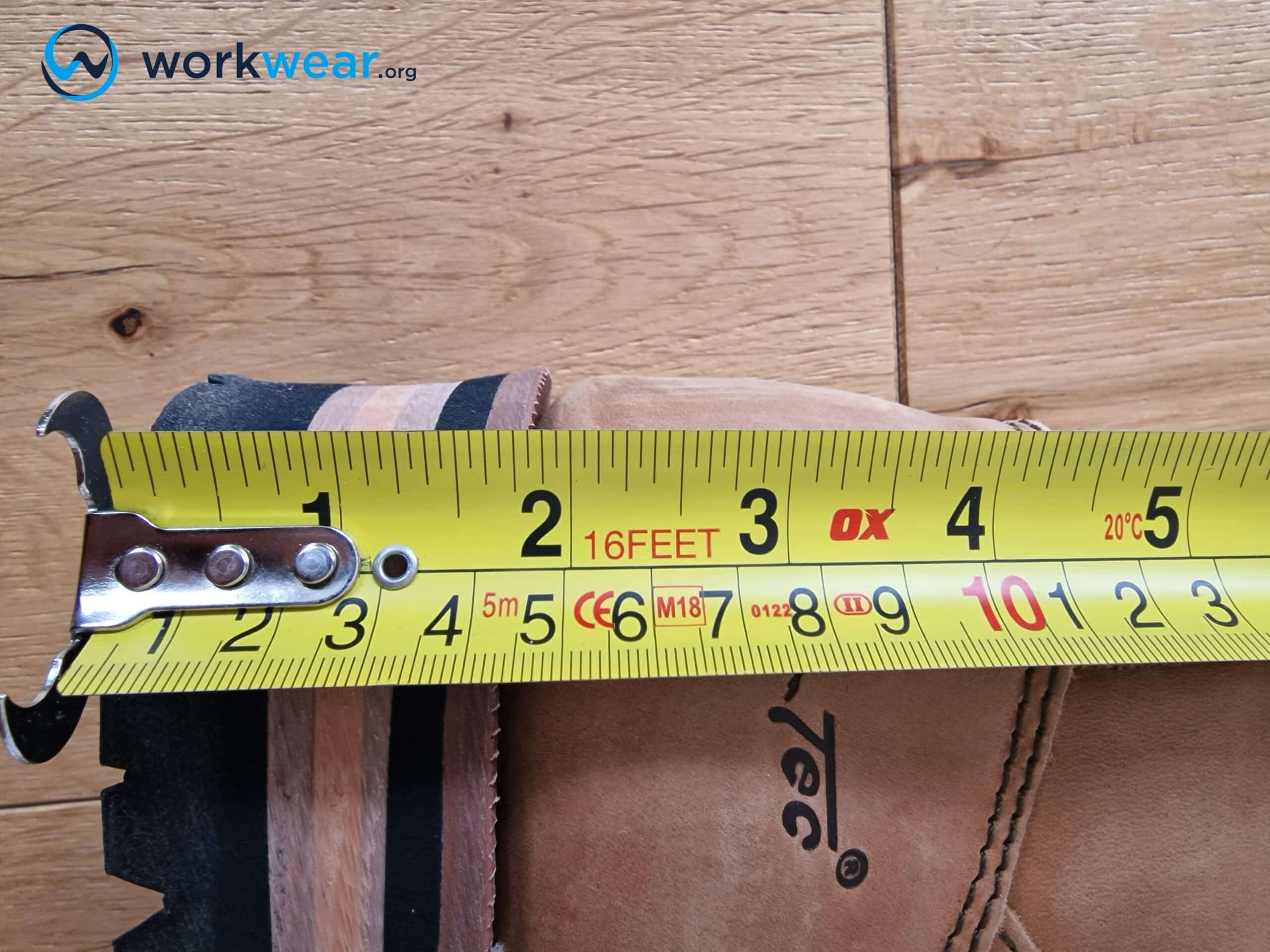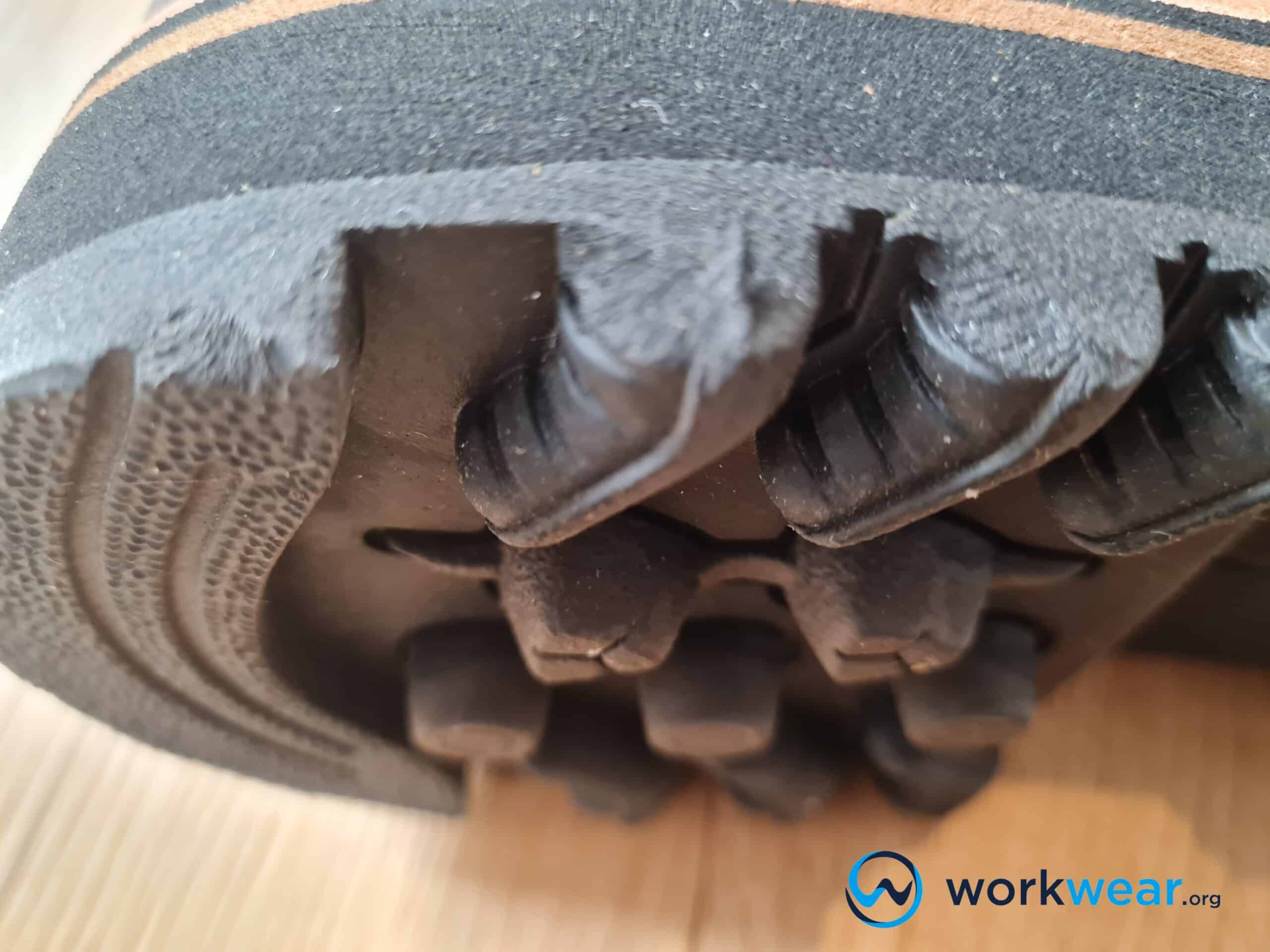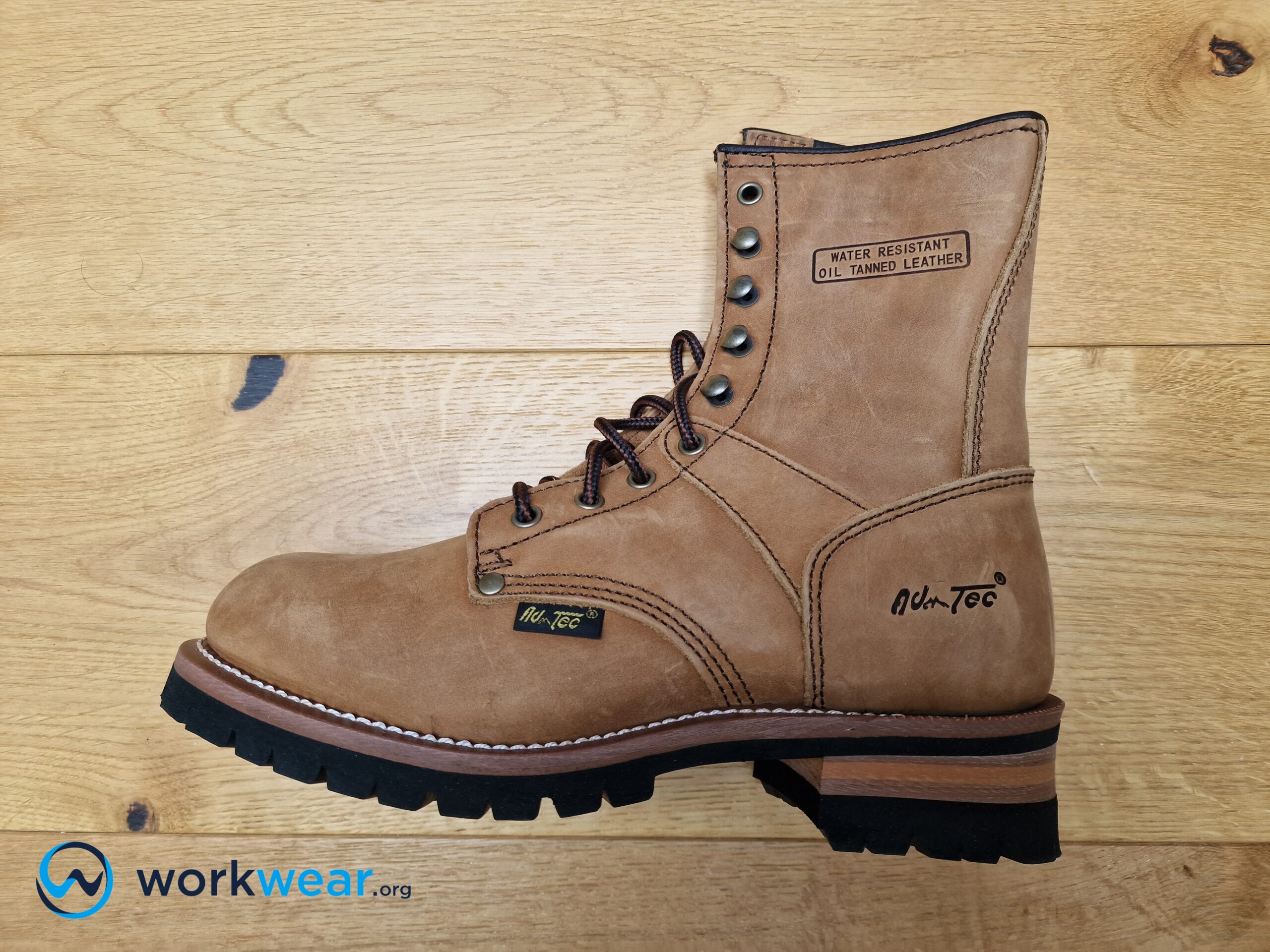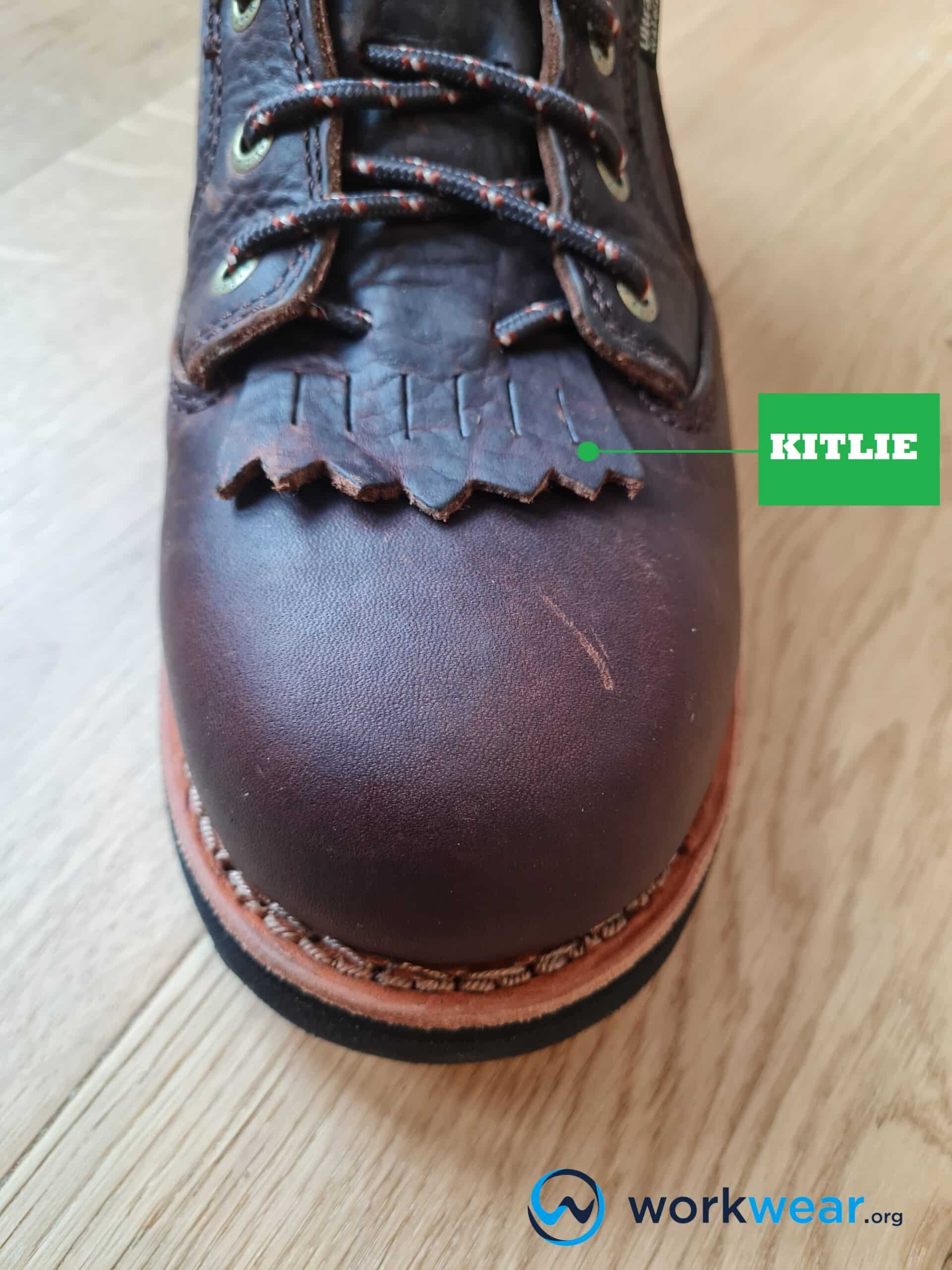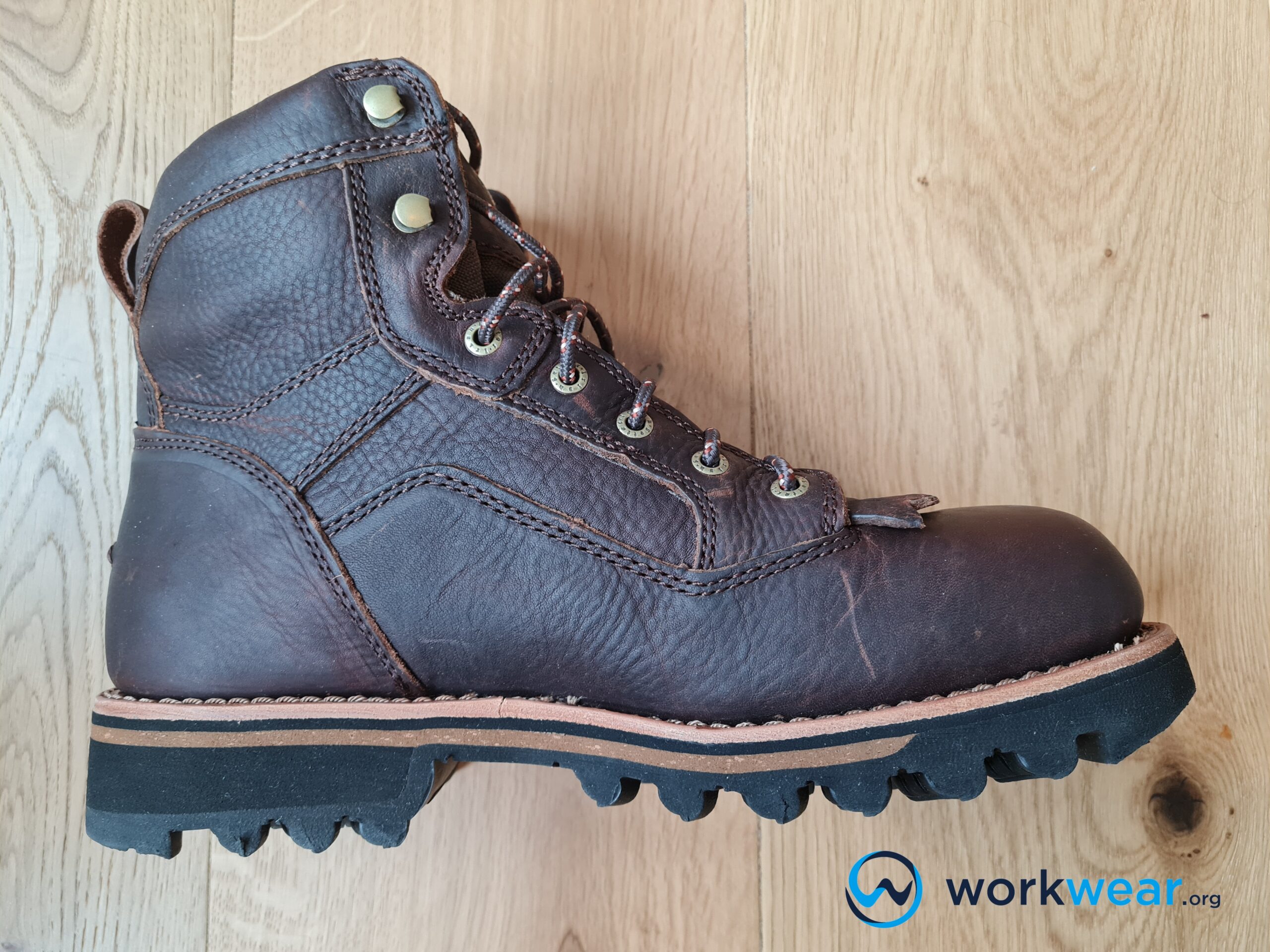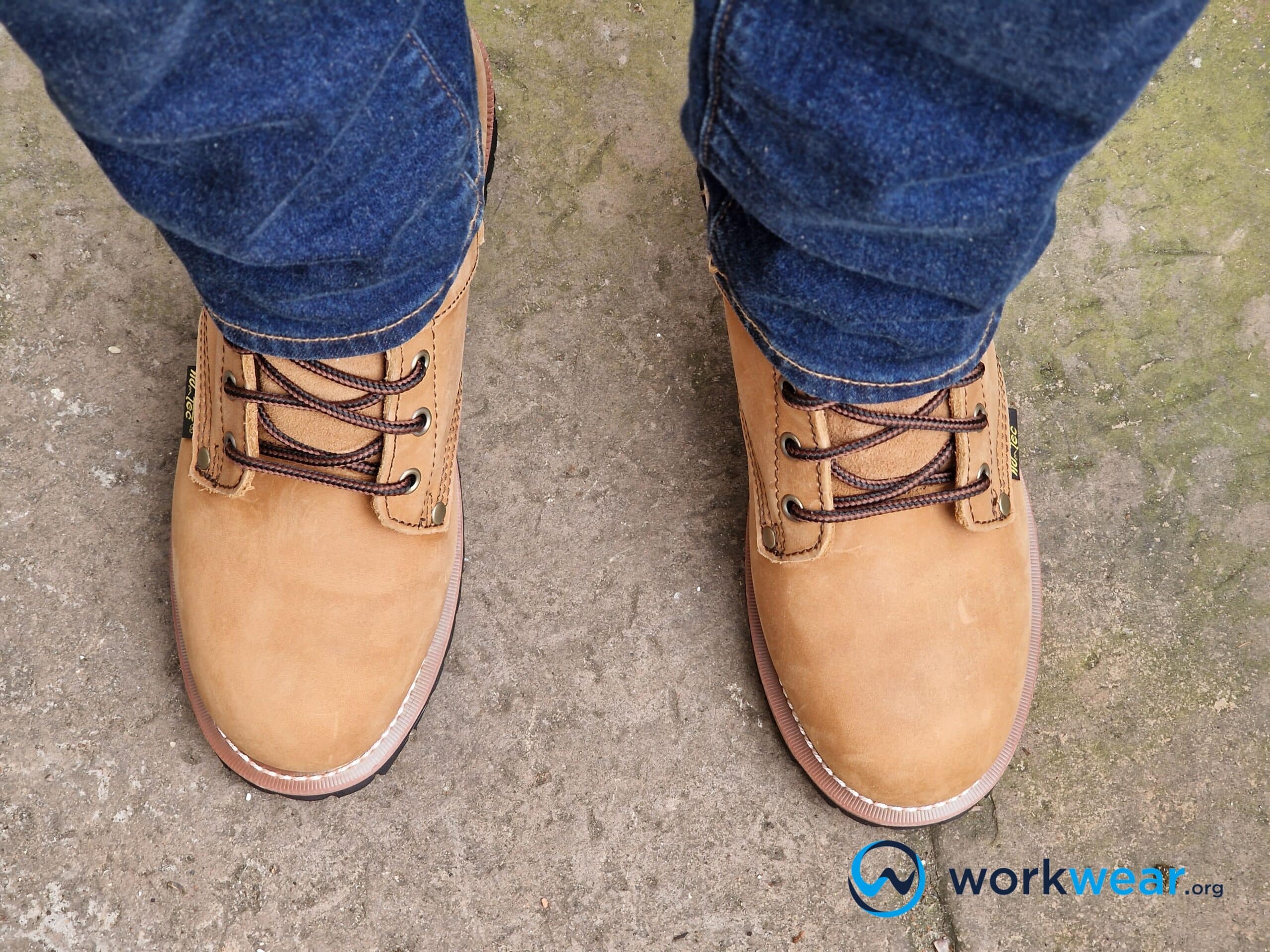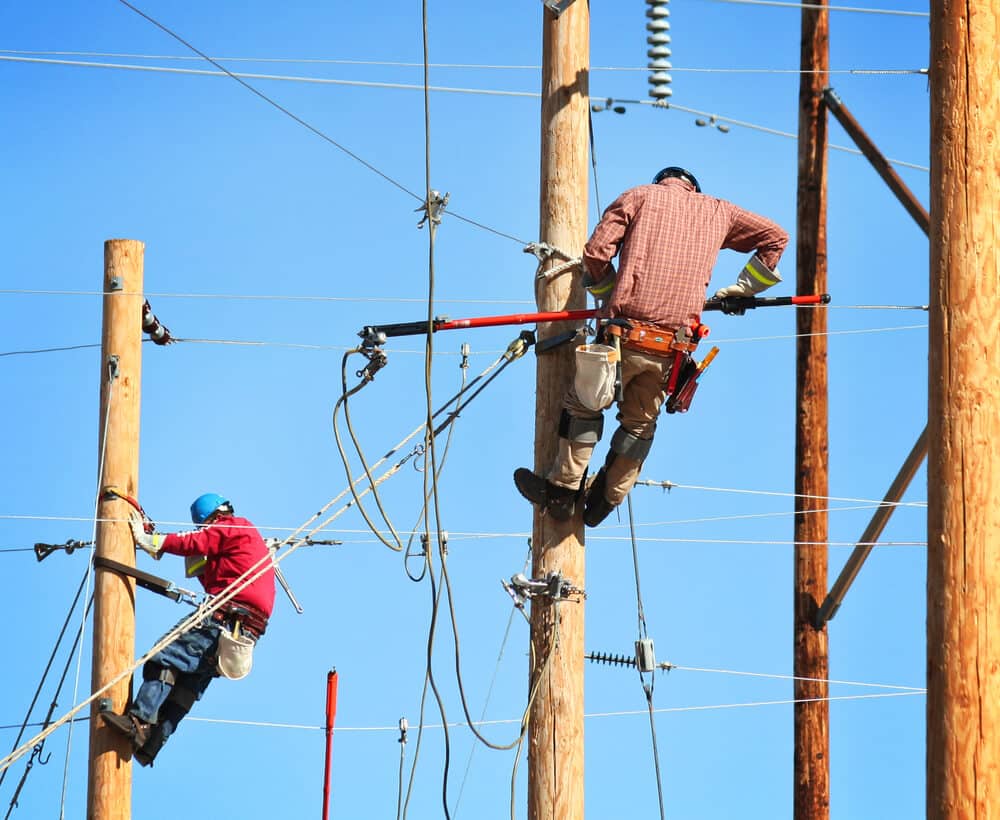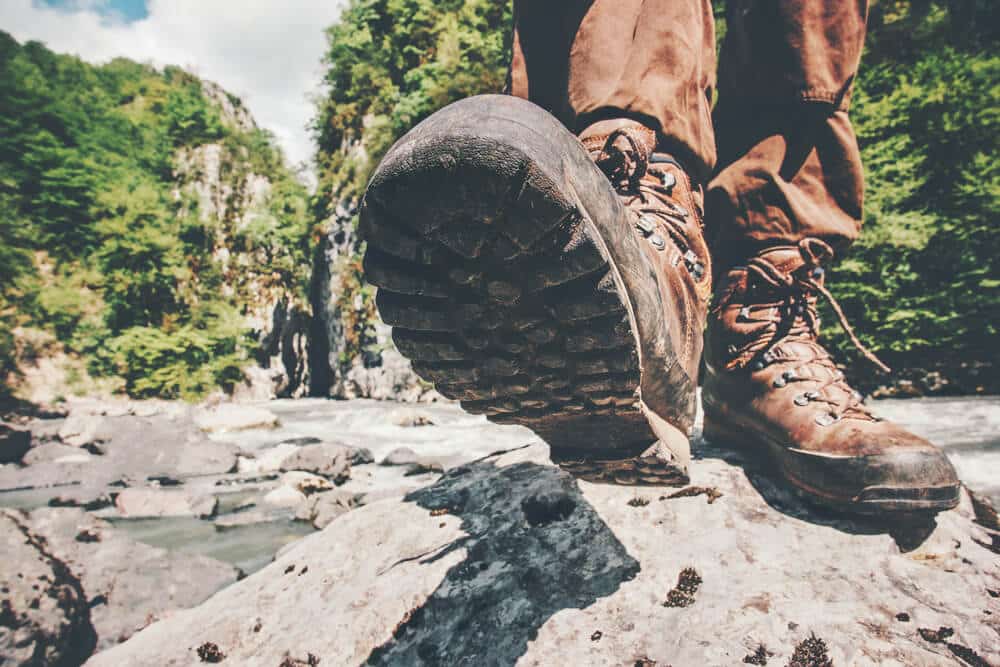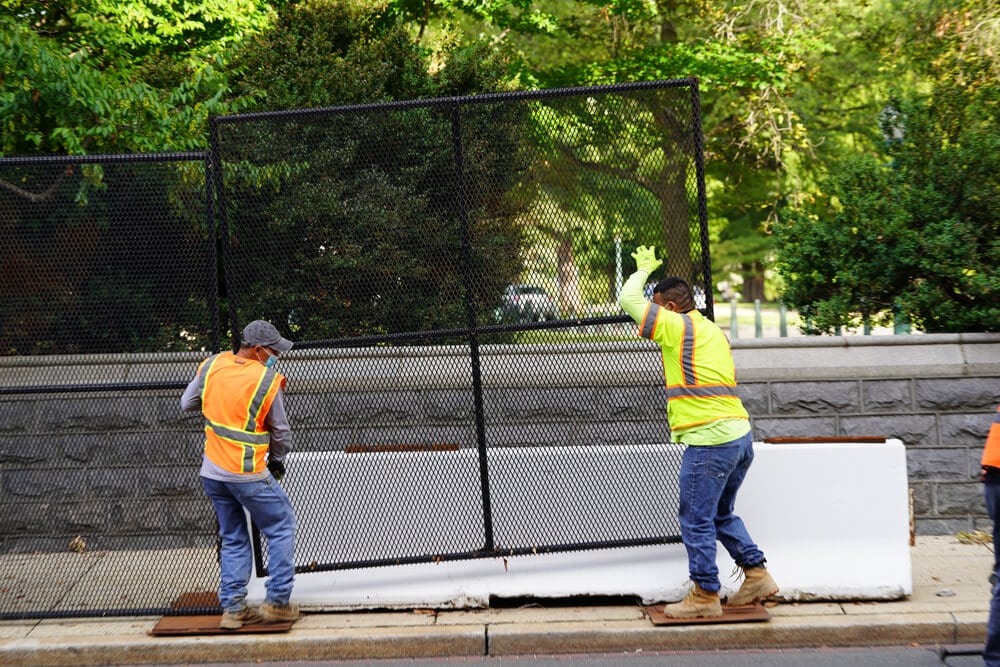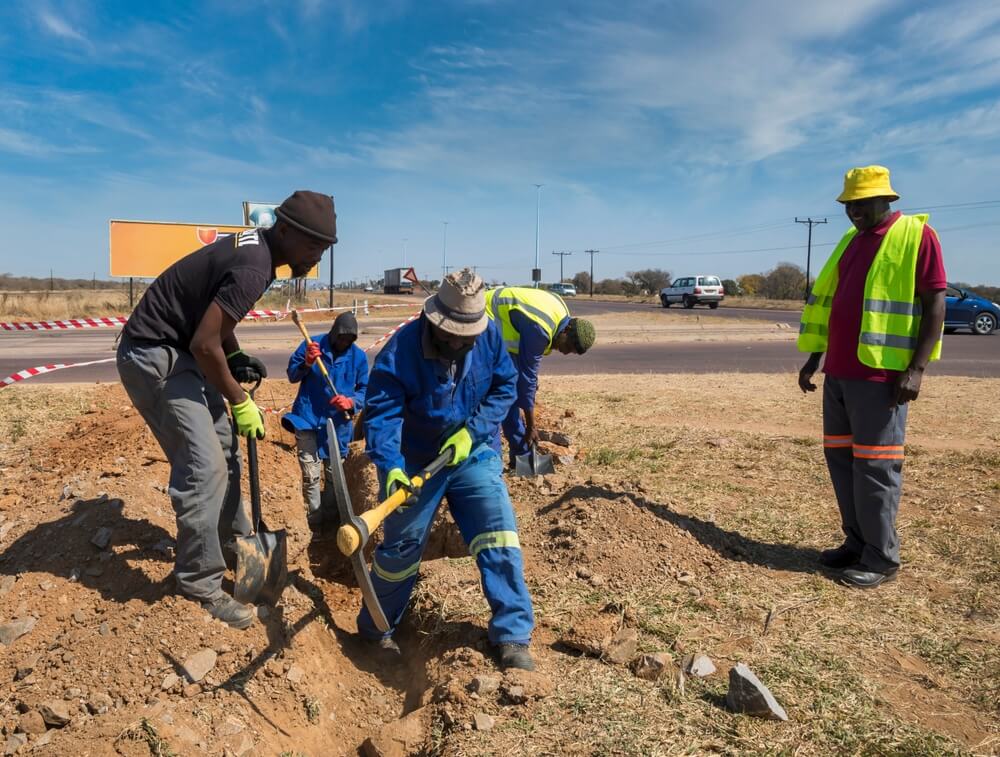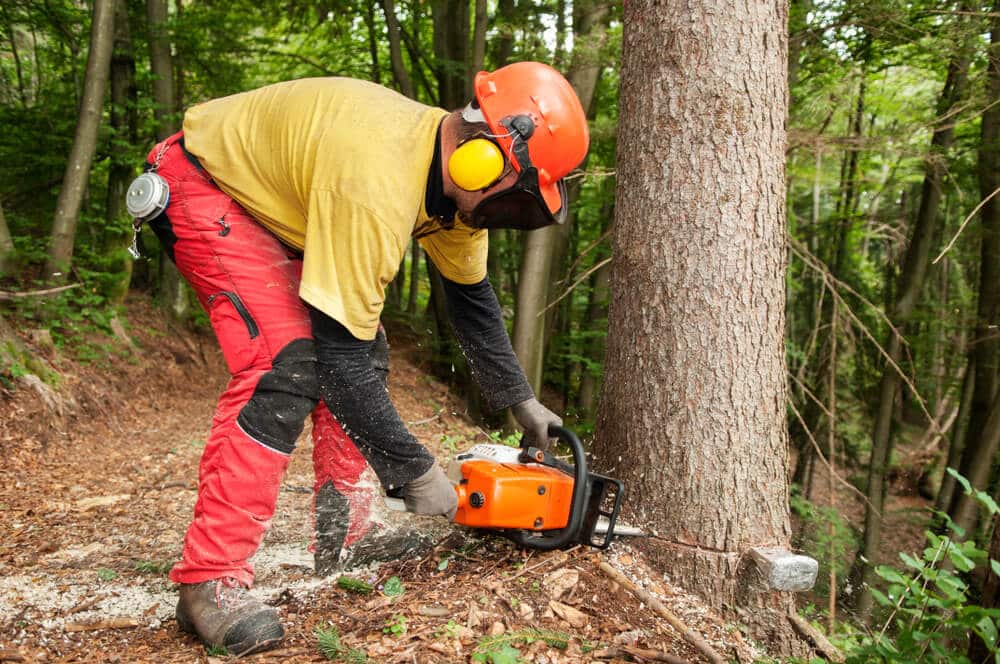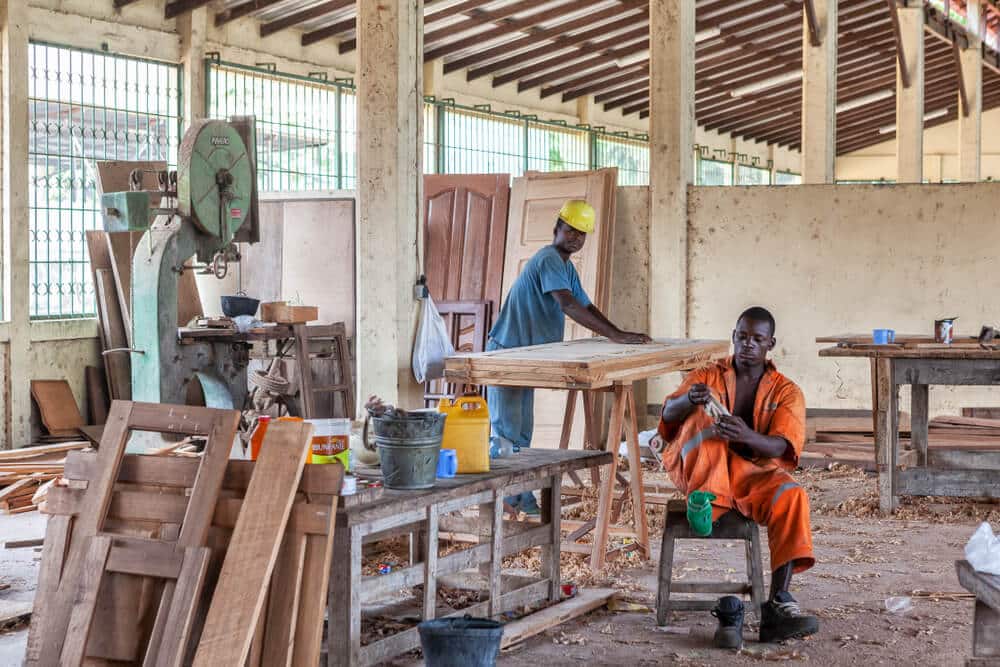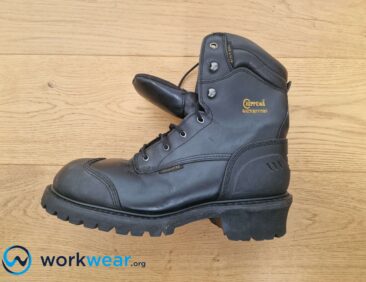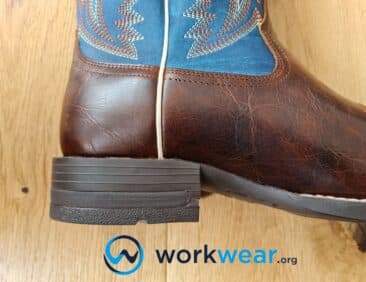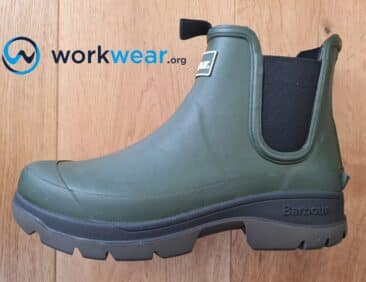Jobs that Require Logger Boots

Work boots should suit the environments they’re used in. They’re essential parts of daily work wear, so they must have the necessary features for specified tasks and job sites. For example, logger boots were originally designed for use by workers in the logging industry, but enhancements to the boots’ designs eventually made them suitable for other jobs as well.
Logger boots have heavy-duty structures that perform well in tough outdoor conditions.
This is especially for jobs that require tasks to be done in rough or wet ground conditions. They have similar features to other sturdy work boots, with the addition of a few distinguishing features that enable these boots to withstand extremely challenging environments. In this article, we’ll see what jobs will benefit the most from the robust qualities of logger boots.
Key Takeaways
- Logger boots are built to withstand difficult outdoor conditions that various jobs encounter regularly. These boots often have distinctive qualities, such as raised heels, aggressively lugged outsoles with high traction, waterproof materials, tall heights, safety toes (or at least a reinforced toe box), and a kiltie.
- For more efficient movements in tough outdoor settings, loggers must wear logger boots that protect against heavy falling logs and slippery outdoor surfaces. Linemen can enjoy increased safety with logger boots’ raised heels that grip ladder rungs more securely while maintaining a balanced gait on slippery ground conditions. Meanwhile, landscapers who work on muddy ground will benefit from using high-traction logger boots that keep the wetness out and protect against heavy falling objects.
- Fence crews require logger boots to protect their feet from being harmed by falling tools or fencing materials and stop wetness from seeping while working in inclement weather. Ditch crews can keep their stable footing while working on muddy excavated sites with the help of logger boots, which stop liquid penetration while protecting against slipping and dangerous impact.
- Logger boots with tall, rugged designs protect the feet of ranchers and farmers against extreme wetness, slipping accidents, and compression or impact threats all around tough work settings. The superior toe protection helps keep forestry workers’ feet safe from being crushed by falling branches and the tools needed to maintain the forest’s pristine condition.
- Sawmill operators require logger boots for continuous stability on tricky surfaces and against heavy items that can accidentally fall on the feet, including logs and equipment. Construction workers on outdoor or rural project sites can have a safer experience with rugged logger boots that protect against falling tools and construction materials, slipping hazards, and extreme wetness in challenging outdoor environments.
Distinctive Features of Logger Boots
Raised Heel
Logger boots have considerably higher heels compared to regular work boots.
These raised heels boost height and, more importantly, bite strongly into steep or slippery surfaces.
This results in improved stability while navigating muddy ground or loose, wet soil encountered while working outdoors. The high heels increase the clearance between the bottom of the boots and wet ground to keep the feet dry. They also give the boots a better grip on ladder rungs for a safer experience while going up and down ladders.
Aggressive Lugs
The treads or grooves on the outsoles of logger boots are significantly more pronounced than those of ordinary work boots.
The deep lugs deliver strong traction, making it easier for workers to walk confidently over tricky ground conditions without losing their balance.
These lugs have a firmer grip on muddy, slippery, or inclined terrains where ordinary work boots’ treads may easily slip. In addition, some logger boots come with outsoles fitted with spikes, providing exceptional stability when walking on logs.
Tall Structure
Logger boots have tall shafts that protect the feet, ankles, and calves against the elements.
The enhanced height likewise protects against small animals, sharp branches, and other safety hazards that can cause harm in challenging outdoor settings. The tall shaft of logger boots (usually available in height options of 8-10 inches) also prevents liquids from splashing in through the boot opening, which can be a risk when using shorter boots in puddles.
Kiltie
A kiltie is a piece of leather fringe that sits at the end of the laces on some logger boots.
It stops dirt and debris from entering the boot, preventing the uncomfortable feeling of walking with an unwelcome object inside your footwear.
The kiltie also creates a barrier that blocks dirt and mud from getting in, so the feet can stay cleaner for longer while working in challenging outdoor job sites.
Waterproofing
Logger boots typically have waterproof designs to protect the feet against water, mud, and other sources of extreme moisture that can be encountered outdoors.
The strong waterproofing blocks liquids to ensure the feet stay dry and comfortable all day.
Waterproof materials – including the uppers and inner lining – may be combined with Goodyear welt construction to increase resistance against liquid penetration further.
Safety Toes/Reinforced Toe Box
Loggers are exposed to hazardous impact and compression, which is why safety toes or reinforced toe boxes are important features in logger boots.
The safety toe caps can be made from metal (steel or aluminum) or composite (Kevlar or carbon fiber). Meanwhile, logger boots with soft-toe designs come with reinforced toe boxes made with exceptionally strong materials. These enhancements shield the toes against heavy rolling or dropping objects that can cause serious injuries to unprotected feet.
Jobs that Require Logger Boots
Loggers
Workers in the logging industry are the original target market of logger boots. These professionals do their jobs in hazardous outdoor conditions where the surfaces are almost always slippery, muddy, or unstable.
The tall, heavy-duty structure of logger boots protect the feet against sharp pieces of wood and critters that can be encountered while on the job.
The design of these boots also keeps the feet safe against extreme wetness, while the strong traction enables safer walking on sloped or uneven ground conditions. In addition, safety toe caps or reinforced toe boxes guard the toes against serious crushing injuries caused by weighty falling or rolling objects.
Linemen
Linemen enjoy significant benefits when wearing logger boots for work. These boots have tall structures that cover more of the lower leg and feet, ensuring comfortable dryness even when the work needs to be completed in varying weather conditions. In addition, they’re strong enough to keep up with the challenging outdoor sites that linemen regularly work in, so they won’t easily get damaged even with heavy use.
Logger boots’ raised heels hold on more firmly onto ladder rungs, allowing linemen to move up and down ladders in much safer ways without compromising their mobility.
Landscapers
Landscape workers often do their work in muddy conditions where logger boots perform best.
The boots are designed to dig firmly into the ground, enabling landscapers to walk and move efficiently on tricky surfaces without losing their balance.
The strong waterproofing of logger boots keeps the feet dry in case landscape professionals need to spend most of the day in muddy or waterlogged ground. In addition, safety toe caps or reinforced toes keep the toes safe from injuries in case tools, or fencing materials drop onto the feet. Meanwhile, the tall boots keep most of the wetness out while keeping the feet, ankles, and lower leg safe from irritation and bites from insects or small animals around the landscaping work area.
Fence Crews
Workers who install fences may need to finish their tasks while on muddy or slippery ground. They need logger boots with aggressive treads that strongly bite into treacherous ground conditions, offering a safer way to walk around that doesn’t sacrifice efficiency at work.
The tall height and waterproof structures of logger boots keep the feet dry in wet conditions throughout the time needed to complete the fence installation or repairs and other tasks as assigned by the foreman. In addition, the safety toe caps (or reinforced toe caps in soft-toe designs) protect the toes against tools and equipment that can fall accidentally in the workplace.
Ditch Crews
Ditch crews dig and maintain ditches and trenches, which may be needed to install sewer lines, water pipes, and other utility lines.
Working in excavated areas exposes these workers to extremely challenging conditions where mud and large amounts of water can often be present. Logger boots offer enhanced protection in very wet conditions, with the tall height and waterproof designs sealing out liquids to keep the feet dry.
Logger boots’ deeply lugged outsoles dig firmly into the earth in and around ditch crews’ job sites, improving stability for safer walking while finishing demanding tasks.
Farmers & Ranchers
Working in farms and ranches involves doing tasks in conditions that are often wet or surrounded by dirt. Logger boots have the heavy-duty construction needed to withstand demanding tasks that need to be completed in farms and ranches regularly.
The raised heels and aggressively lugged outsoles deliver exceptional traction to prevent slipping on muddy or extremely wet surfaces.
The tall, waterproof profiles help block wetness, keeping the feet and lower legs dry while working in the rain and even in wet indoor locations around the ranch or farm.
Forestry Workers
Forestry workers focus on maintaining and enhancing the condition of the forest. Some of these tasks include planting and harvesting trees and planting seedlings, and digging activities as needed.
These workers need logger boots that protect their feet against extreme wetness when working in inclement weather conditions.
The heavy-duty boots with safety toe caps (or reinforced toes) and rugged designs offer superior protection against compression and impact threats, such as heavy tools and falling branches around the forest.
Sawmill Operators
Sawmill operators are exposed to various safety hazards while on the job. These professionals are responsible for operating lumber mill equipment that saw huge timber logs into lumber of different sizes. Logger boots with safety features – such as steel toes and reinforced toe boxes – protect sawmill operators against accidentally dropping logs or heavy equipment that can seriously crush the feet.
The high-traction outsoles of logger boots help maintain continuous stability, making it easier to navigate slippery or unstable ground around the work area.
Construction Workers
Construction workers concentrating on rural or outdoor sites can perform better and safer with the help of logger boots.
These boots typically have safety toes or strengthened toe boxes, offering superior protection against heavy objects – such as tools and construction materials – that can unintentionally fall onto the boots. The boots’ deep lugs and raised heels are designed to dig firmly into the sloped or muddy ground, making it safer to move around challenging outdoor settings without easily slipping or falling. In addition, the tall shaft creates a shield against abrasion hazards and small critters that may lurk around the work area, while the waterproof construction ensures all-day foot dryness in wet environments.
Personal Testing Experience
We got to try out two superior quality logger boots – the Chippewa Aldarion Insulated Composite Toe Boot and Georgia Boot Hammer Internal Met Guard Steel Toe Work Boot – in challenging conditions. The Chippewa Aldarion boot had composite toe protection that shielded the toes against heavy falling or rolling objects without the hefty feel of steel toe caps. The waterproof lining worked with the rugged 8-inch-high structure to block liquids for comfortable dryness, while 3M Thinsulate Ultra provided reliable insulation without the additional weight. Meanwhile, the Georgia Boot Hammer had steel toe caps that kept the toes safe from being crushed by dangerous compression and impact. The high-traction outsole prevented slipping and was also resistant to oil, abrasion, and chemicals. The heavy-duty design of this 8-inch boot features a moisture-wicking, cushioned interior for superior comfort all day long.
Conclusion
Logger boots are designed to deliver reliable foot protection and support for professionals working in tough conditions. These boots typically have enhanced features, including safety toes, raised heels, deeply lugged outsoles, tall heights, waterproof materials, and a kiltie. Logger boots are suitable for the following jobs: loggers, linemen, landscapers, fence crews, ditch crews, farmers & ranchers, forestry workers, sawmill operators, and construction workers in outdoor or rural project sites. These boots are built to keep up with the challenging job areas while also protecting against wetness and safety hazards that may be encountered in such hazardous environments.
FAQs
- Do all logger boots have safety toes?
- No. Some logger boots have soft-toe designs but are enhanced with reinforced toe boxes for strong toe protection.
- Are all logger boots fitted with kilties?
- No. Some logger boots don’t have kilties, but these boots can be attached with a removable kiltie if preferred for additional protection against debris.
- When are insulated logger boots required?
- Insulated logger boots are essential for the jobs we discussed above that are done in low-temperature settings. For example, loggers who work during winter months will need insulated logger boots that can keep their feet comfortable and warm while working in cold outdoor locations.
- Are logger boots heavy?
- Generally, logger boots are heavier than normal work boots. The extra weight is due to the tall shaft which uses more materials, as well as to the thick outsoles with large treads that offer exceptional traction.
